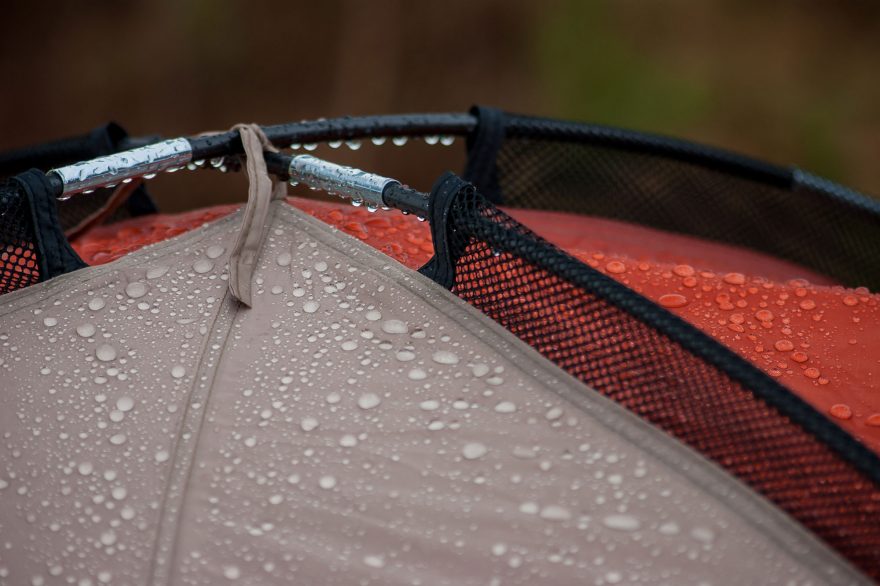
Image by pistolrunde, Shutterstock
Rain can most certainly — and literally — dampen the warmth and dry coziness of a campsite. It’s a tolerable nuisance grudgingly dealt with using a few techniques and skills. It can also be used to your advantage in more self-reliant situations.
There are two big things that rain during a camp outing can bring: 1) concerns over how to stay dry and comfortable; and 2) the opportunity to collect rainwater to augment your drinking supply. Think of it as one being a pain and one being a gain.
A few ways to beat the rain
Rain clothing/gear provides mobile shelter from the rain. It’s your basic front line of defense, a protective layering system that starts with a moisture-wicking base that lets your clothing “breathe” and expel body moisture through a mid, insulating layer. Choose breathable fabric (Gore-Tex, etc.) or pick waterproof outerwear with ample vents to help circulate air between the layers.
Uninsulated waterproof footwear dries faster than those with built-in insulation. Removable liners can be exchanged for dry ones or removed and quickly dried. Wool socks are a foot’s best friend in boot-soaked, rainy weather. Also consider gaiters for post rain walking through grasses, brush, etc.

Choosing a campsite requires common sense: Higher ground means no pooling of water under your tent or in your campsite. Select a site above any indications of a high water mark from flooding or swelling of nearby bodies of water. A rain storm miles away can send torrents of water towards your campsite.
Avoid camping under trees with limbs that could become heavy and break due to wet foliage. Also consider steep slopes that could become saturated and slip, forming landslides threatening your campsite.
Rain-resistant tent: Check the quality of stitching on a tent and even if new, apply waterproofing seam-sealer to all seams. Know how to properly pitch a tent/rain fly so exterior ground tarp edges do not extend beyond sides of the tent. Use a tarp inside the tent that is slightly larger than the floor. The turned-up edges keep any seepage from below from contact with campers and gear.
Set up a new or long-stored tent in your yard before camping and test for leaks with a garden hose.
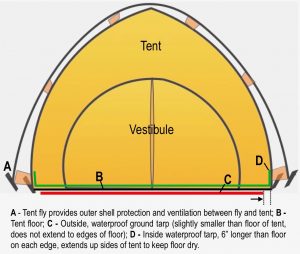
Graphic by Tom Watson
Rain tarp: Protection from rain, sun and wind make camp tarps indispensable campsite gear. Used over kitchen and eating areas as well as for lounging near the campfire, a good tarp is essential for providing a degree of shelter from the elements.
When choosing a tarp, consider its use as an emergency/signal — multiple color schemes and patterns are more easily seen from above or afar. Using “Y” sticks to change the angle and shorten guy lines gives you more options when setting up tarps, too.

Graphic by Tom Watson
Other helpful tips include: Keep smaller gear dry by stowing it in an empty cooler; a camp umbrella can block rain and wind for lighting campfire and can also be kept near your tent door for rainy, late-night calls of nature; dead wood on branches is usually drier than wood lying on the ground; consider bringing fire-starter products (like a lighter or magnesium stick and dryer lint).
The rain gain
An obvious advantage of rain is as a source of fresh, clean and safe drinking water. Even if you have a natural source nearby (that could become muddy or otherwise contaminated due to flooding), collecting rain in camp is just good insurance.
Rain can be collected in depressions in the ground or within frames (logs, stones) lined with plastic — forming catch basins that become rain reservoirs.
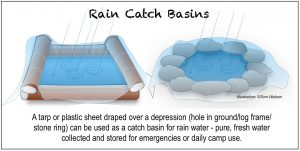
Graphic by Tom Watson
The sloping side of a tarp can be loosened to form a crease that acts like a funnel, channeling rain on the tarp surface down to a spout-like point on the rim of the tarp and into a pan, bucket or other type of collecting basin.
Tying a rock to a piece of small line and suspending it from the tip of the spout created on the edge of the tarp down into the collection basin/bucket will cause the water to flow directly into the container without wasteful spattering or errant flowage.
While rain would seem like an unpolluted source of water, airborne micro-particles could contaminate the rainwater so filtering/boiling may be a prudent option in some situations.
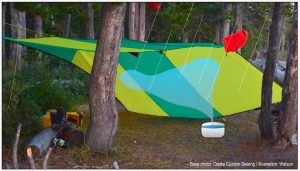
Illustration by Tom Watson
Check the weather and listen to forecasts so you are not caught off guard by a rainy campsite. Friend or foe, rain is part of the overall camping experience.
Tom Watson is an award-winning outdoor safety and skills columnist and author of guide books on tent camping, hiking and self-reliant survival techniques. His website is www.TomOutdoors.com.
 Your Privacy Choices
Your Privacy Choices

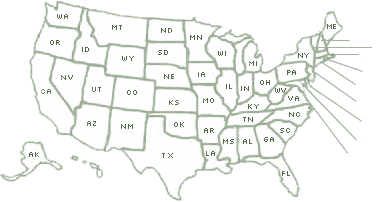
 The
The